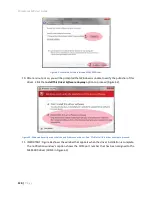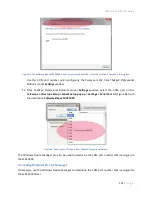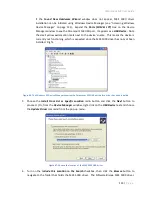
Paramount MX User Guide
108 |
P a g e
Synchronization History
Each line on the
Synchronization History
report shows details about past synchronizations, including
(from left to right, separated by commas):
•
Date and time of the synchronization
•
Relative hour angle of the home sensor position (page 80)
•
Relative declination of the home sensor position (page 79)
For a given optical system, if the telescope is pointed to the correct star
and
TheSkyX’s location, date,
time, time zone and Daylight Saving option match the observing location, the resulting hour angle and
declination of the home position should remain fairly consistent (but not necessarily identical) for each
synchronization.
Since star synchronization is critical to the Paramount’s normal operation, if the relative hour angle or
the relative declination of the home sensor position is appreciably different between successive
synchronizations, most likely the wrong star was used for the synchronization (and the Paramount can
no longer point accurately). Revert to an earlier synchronization, or synchronize the Paramount to the
“right” star to correct this situation.
Revert
Highlight a line in the
Synchronization Report
and then click this button to restore this synchronization.
Delete
Highlight a line in the
Synchronization Report
and then click this button to delete this synchronization.
Software Slew Limits
Generally, a German equatorial mount is oriented “normally” when the optical tube assembly end of the
declination axis is on one side of the pier when the observed object is on the opposite side of meridian.
In this orientation, the mount’s payload can never run into the side of the pier so there is no risk of
damaging your equipment.
Operating a GEM in an “abnormal” orientation (see Figure 54), that is, when the optical tube assembly
end of the declination axis and the observed object are on the same side of the meridian offers several
advantages:
•
An observed object can be tracked “through the meridian” without having to flip sides during
the exposure. This maintains the orientation of the field of view. Switching sides rotates the
image plane by 180 degrees.
•
Guide stars do not have to be reacquired. Flipping sides requires reacquisition of the guide star
when the mount slews to the “the other side of the pier”.
One significant disadvantage of operating a GEM in an abnormal orientation is that the mount’s payload
may encounter the side of the pier. While the Bisque TCS is current limited so that running into a fixed
object will automatically stop slewing and tracking, it is always best to keep your expensive optical
equipment from running into
anything
.















































